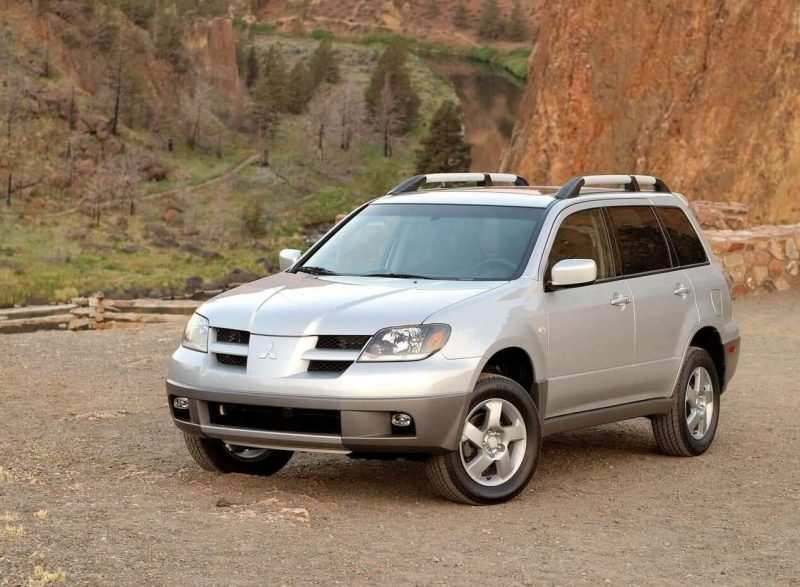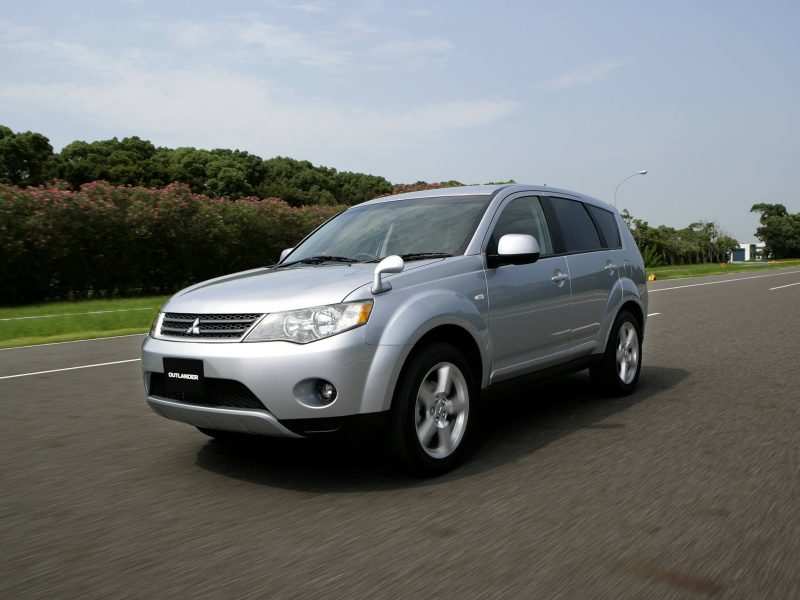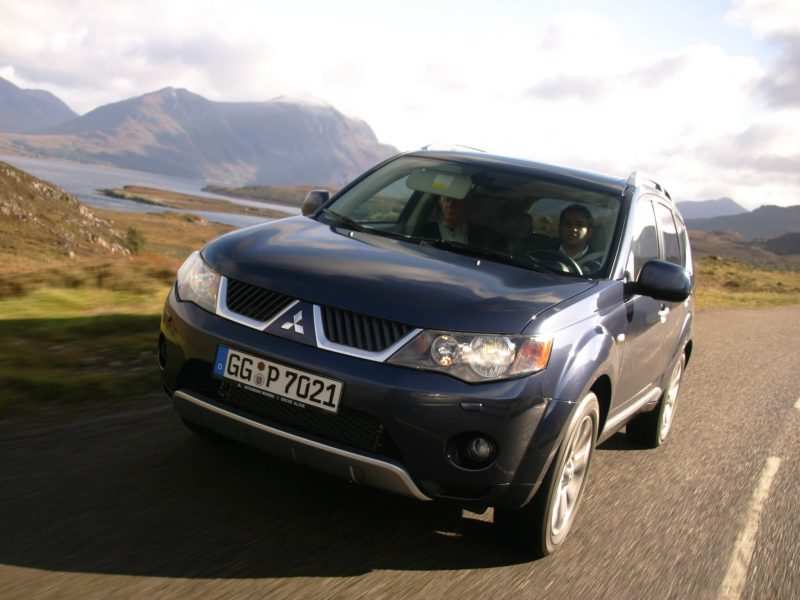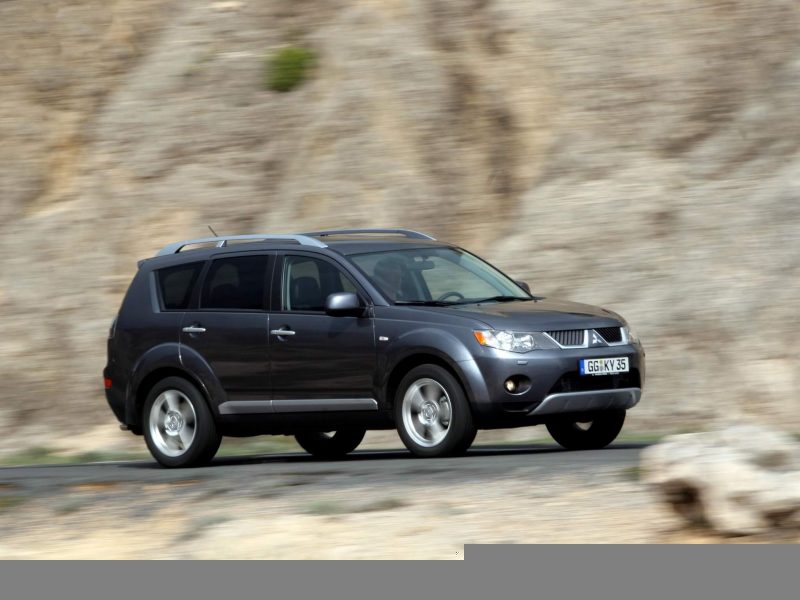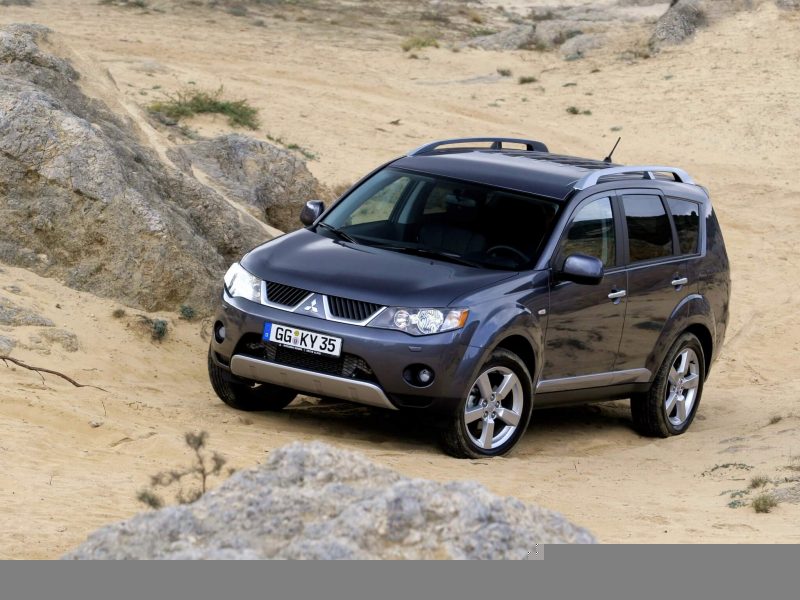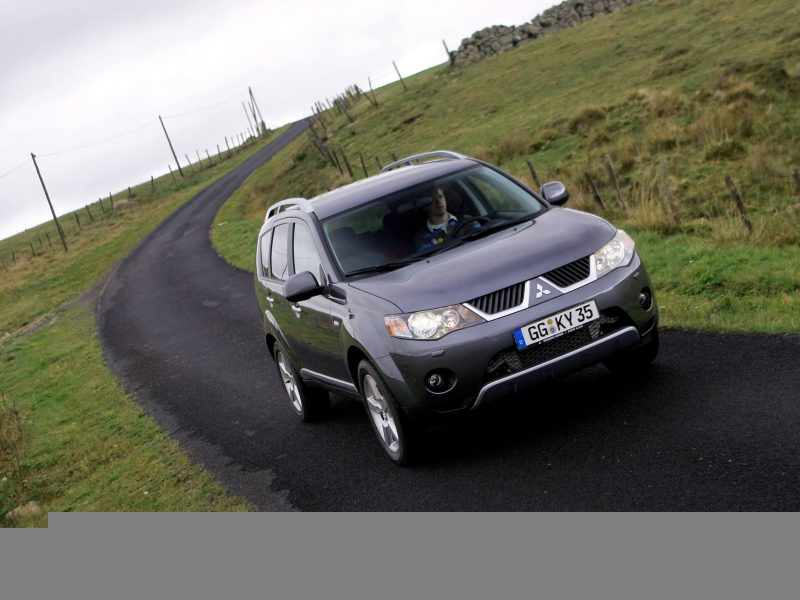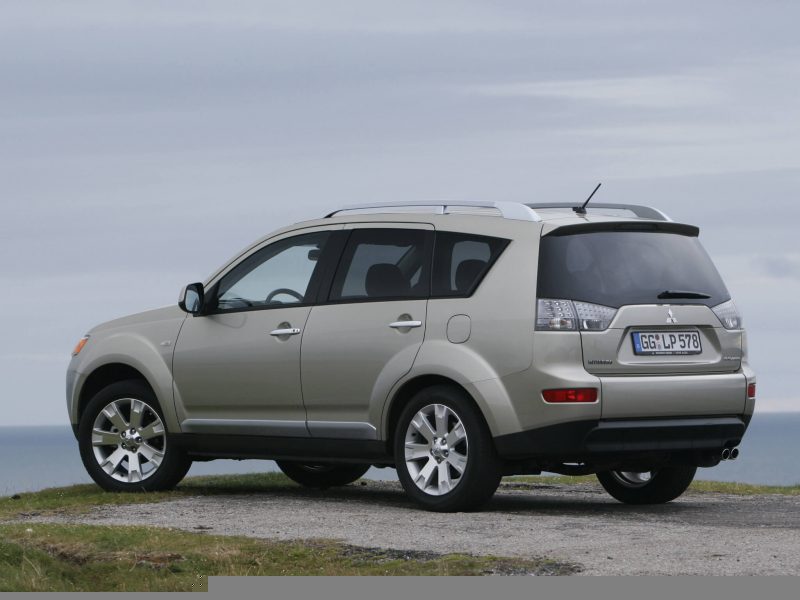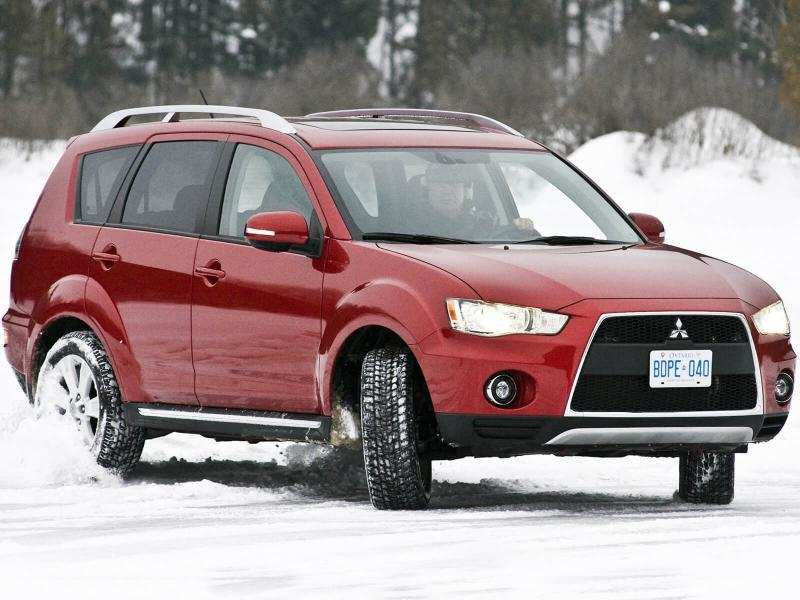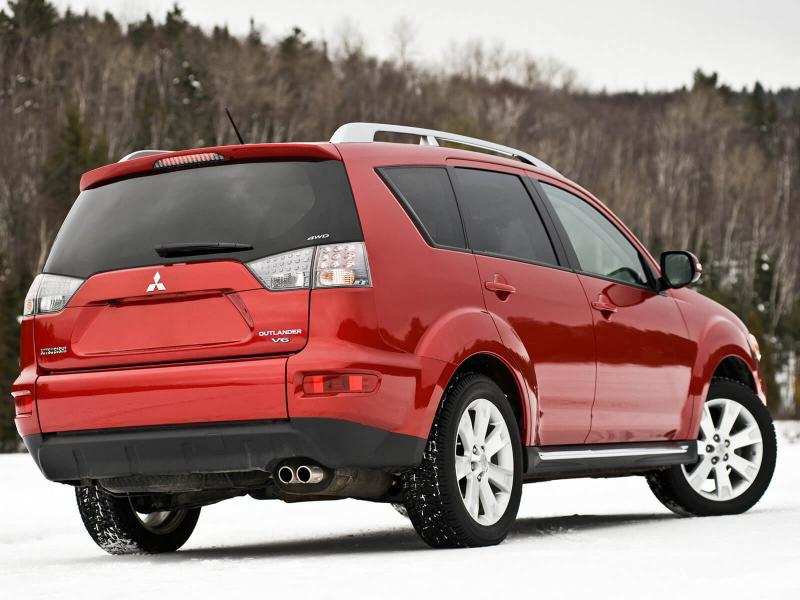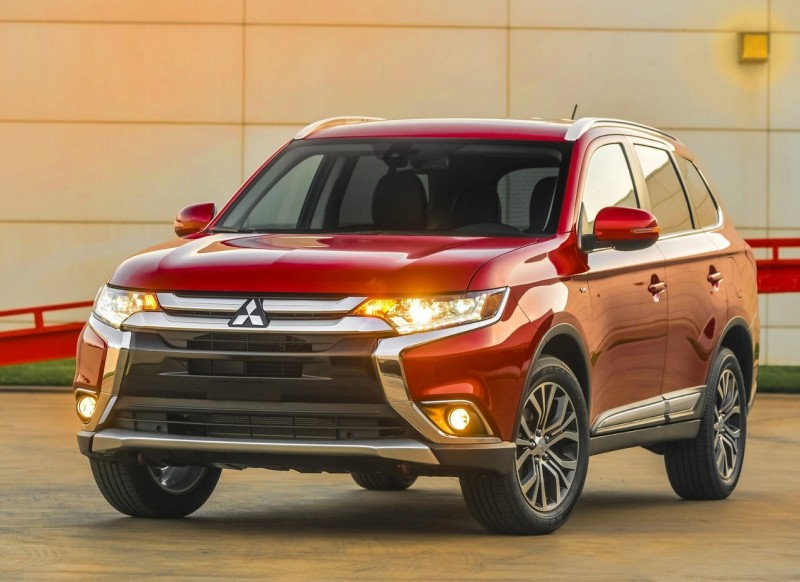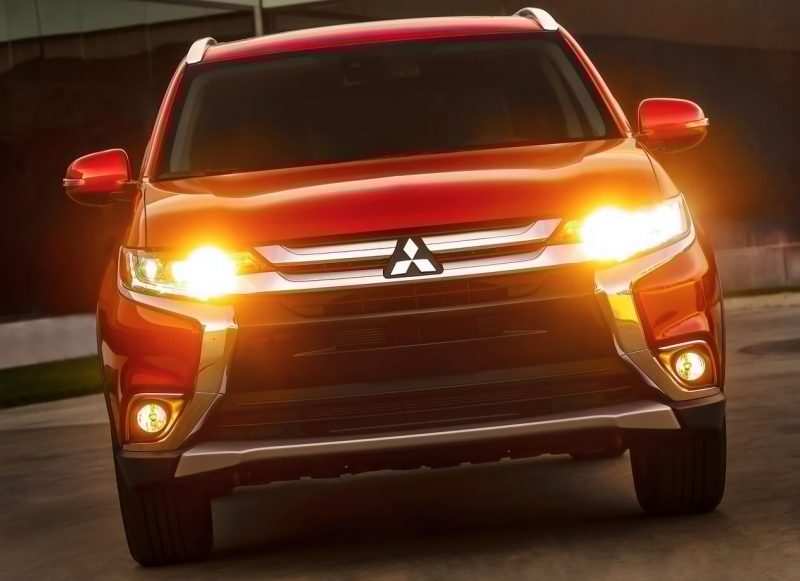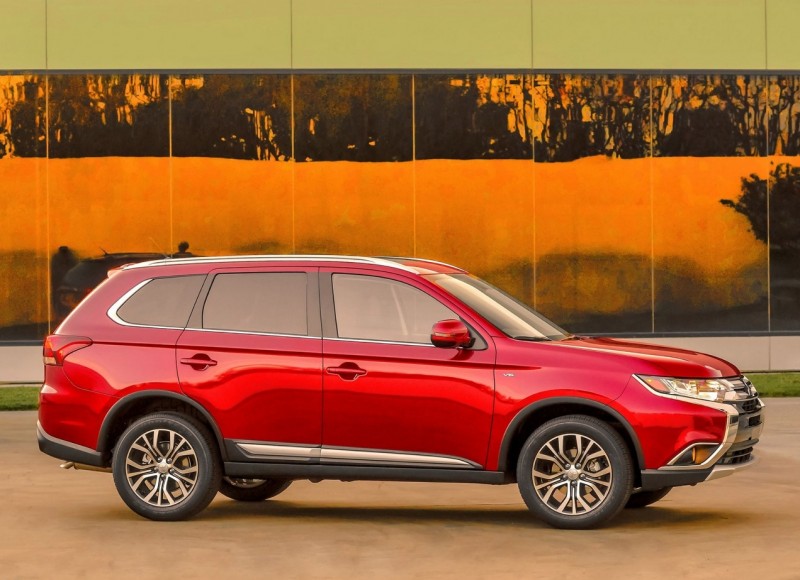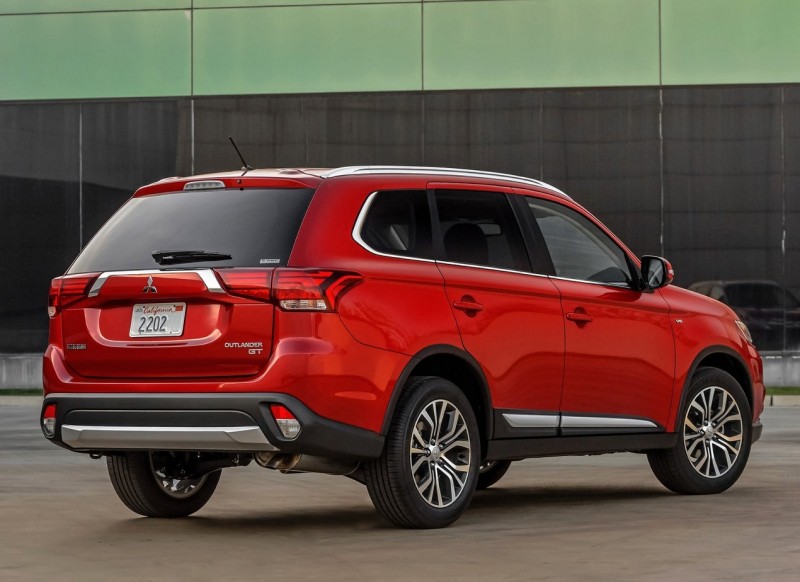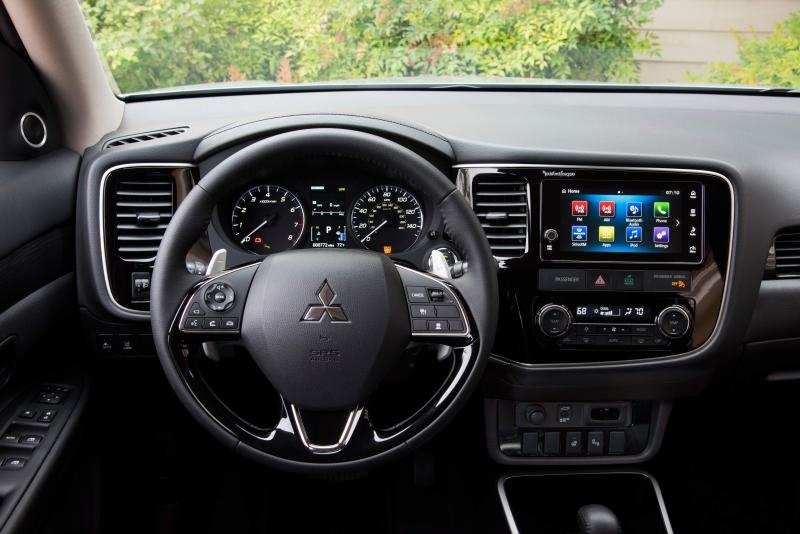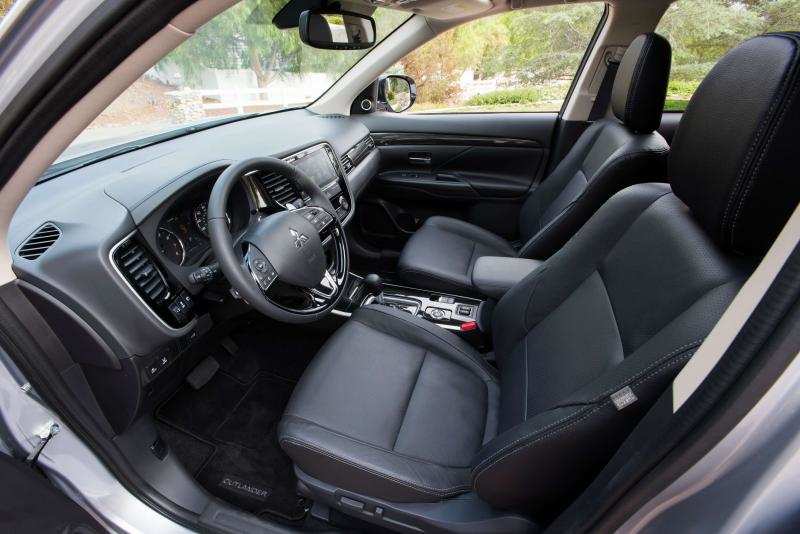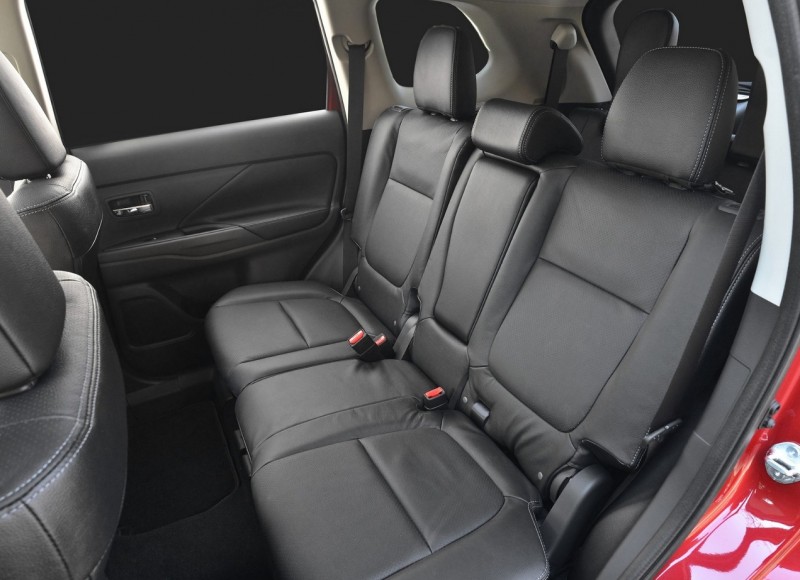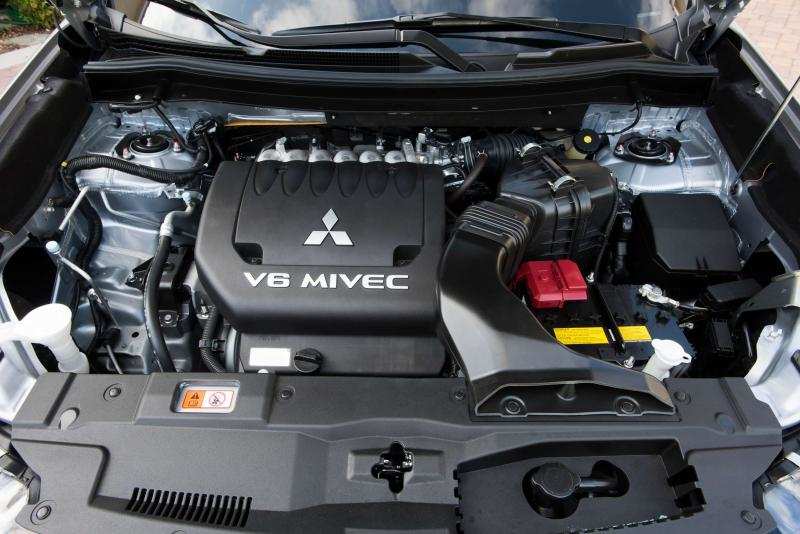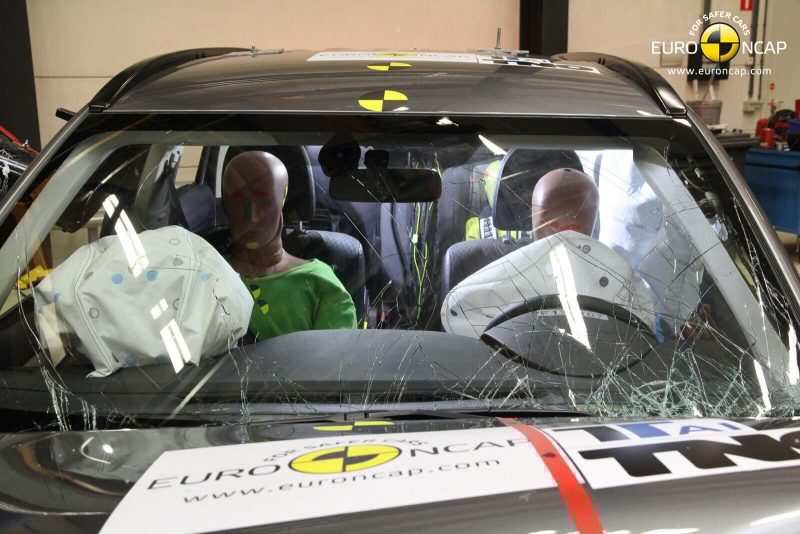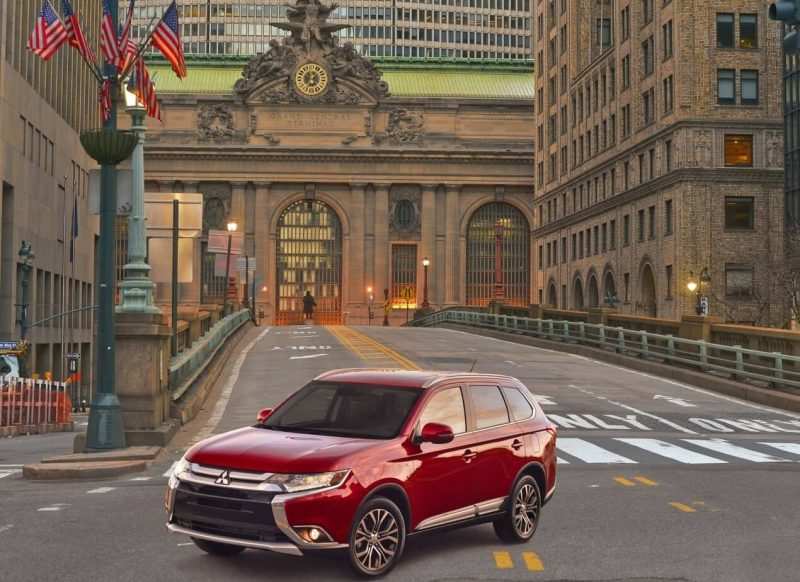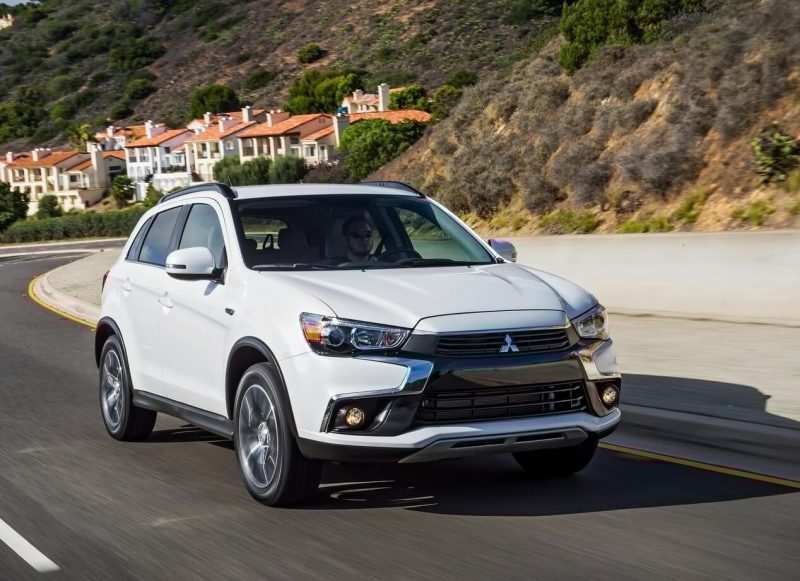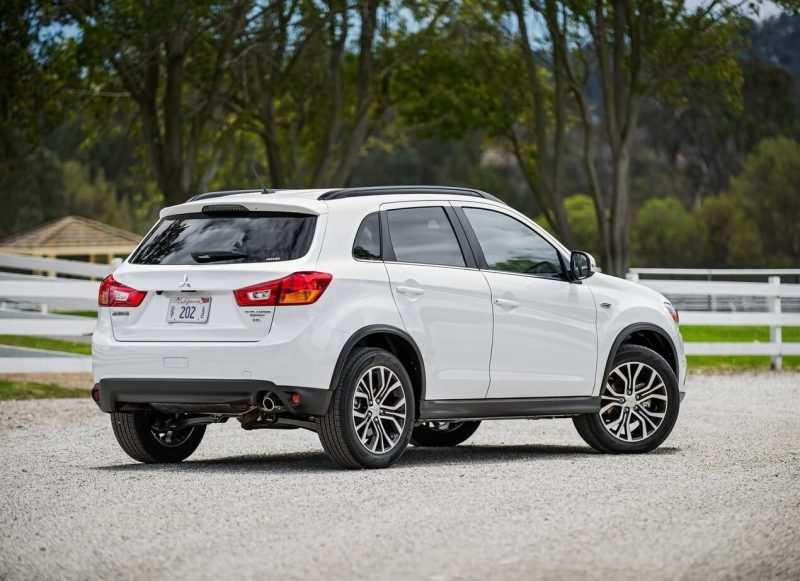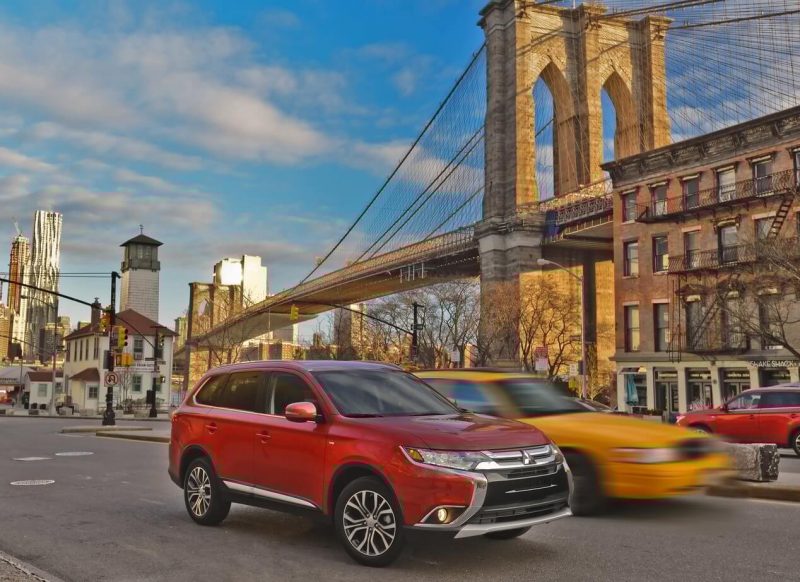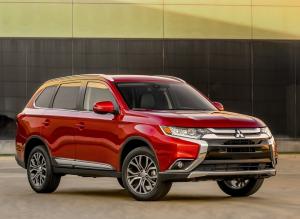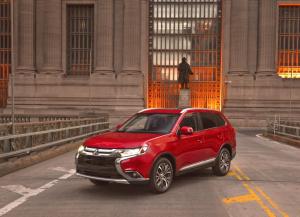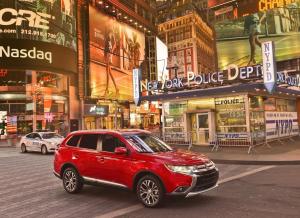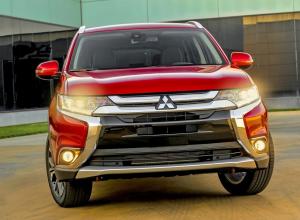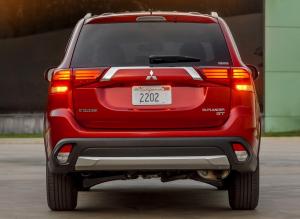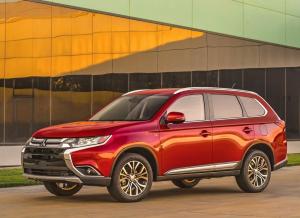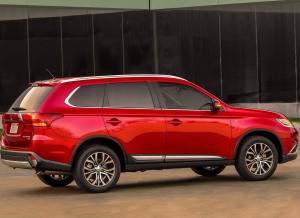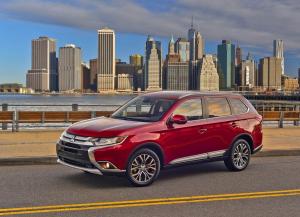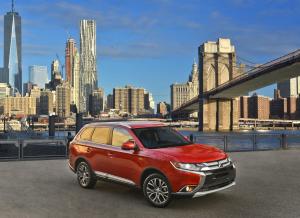Mitsubishi Outlander
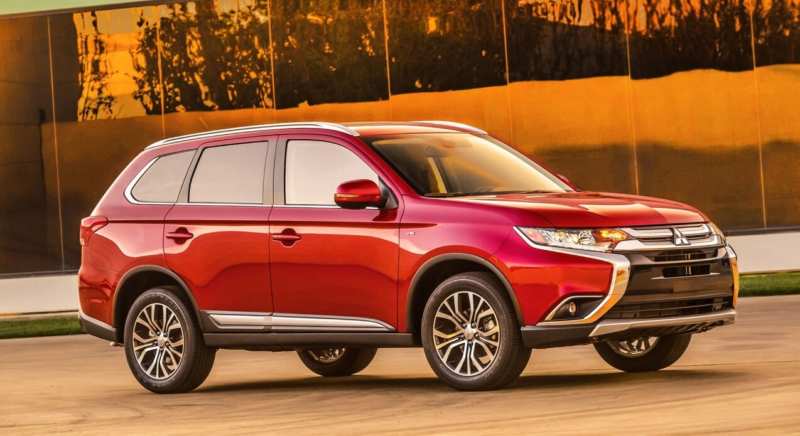
Japanese crossover at the start of production in 2001 was called Airtrek, but along with subsequent restyles got its current name Mitsubishi Outlander. The third generation of this model was first seen by the world a month before its presentation in Geneva in 2012. And Russia became the first country where the production of the car was started, because this country is an important consumer for Japanese exports. In 2015, Outlander was again updated, adding or changing more than a hundred parts, mostly the exterior.
In March of the same year, production began at the Kaluga Automobile Plant, and since April, all Mitsubishi car dealerships in Russia have been sold. For that time which “Mitsubishi Outlander” has spent on the car market of Russia, it has managed to get into the “top” of its class as one of the most popular crossovers in the country. The whole model range is Mitsubishi.
- Car history
- 1 generation (2001-2008)
- 2 generation (2005-2012)
- Safety Outlander 2
- 3 generation (2012-present)
- Exterior
- Three generation interior
- Specifications
- Engine and transmission
- Suspension
- Rail steering
- Brake system
- Safety
- Complections and prices
- Pluses and minuses
- We sum up
- Mitsubishi Outlander 3 photos
- Test drive
- Video overview
Car history
1 generation (2001-2008)
Airtrack (the first name of the model) was shown for the first time in the summer of 2001 at the Japanese exhibition. It was possible to choose a power unit – it could be a 4G63 engine with a capacity of 2.0 liters and 4G64 with a capacity of 2.4 liters. The latter version was synchronized with the 4-speed box “semi-automatic”.
Mitsubishi Outlander x1 had a system with front and rear drive. The strongest model was equipped with a power unit from Mitsubishi Lanzer Evolution (4G63T of 2.0 liters). For its own countrymen, the company provided for the use of old 2.0-liter units, which corresponded to Japanese standards, affecting the size of the power plant.
But the size of the car was clearly larger, so it was not possible to call the model “compact”. When 2003 came, the car became available for sale in North America. The car replaced the Mitsubishi Montero Sport and had a modified grille, head optics.
These and other changes increased the body length by 130 millimeters. The “trolley” was taken from Mitsubishi Grandis, which began to sell in 2003. At that moment, the most powerful 2.4-liter 4G69 SOHC unit was released, where the MIVEC system was. This engine replaced 4G64. The following year it was possible to install a 4G63T turbo engine.
In South America, Outlander was known as Montero Outlander. The company took this step so that the car was connected to the flagship shopping Mitsubishi Montero Sport. In total, almost 20,000 copies of Mitsubishi Outlander 1 generation have been sold in Russia. Later in this article you will find Mitsubishi Outlander 2017 equipment and prices, as well as an overview of the novelty.
2 generation (2005-2012)
The next family has completely removed the old name of the vehicle “Airtrek”. Moreover, this has affected even the domestic Japanese market. Production of the crossover with specification “2 generation” was started in 2005.
This is despite the fact that the 1st generation continued to produce. The second family Mitsubishi Outlander was built on the basis of GS. In general, the car was assembled in different countries around the world. Among the largest factories were: Japanese and Dutch. Since 2010, the company’s management organized the production of crossovers in Kaluga.
The 2nd family debuted in Russia in 2007. In its name the car received the inscription “XL”. This was not done for beauty, but spoke about the increased size and capacity. The standard version was equipped with a 147 hp engine with a capacity of 2.0 liters and an ICPC. Sometimes a variator was installed. The drive depended on the purpose and needs of the customers, so the vehicle was front-drive and all-wheel drive.
The technical equipment in Mitsubishi Outlander, 2005, was increased when the equipment had a 2.4-liter engine that developed 170 “horses”. All its power was given to the power unit on all wheels. The most powerful crossover of the 2nd family was the car with a V-shaped installation.
It was a 3.0-liter six-cylinder 223-horsepower “atmosphere”, which worked in conjunction with the “automatic” box and all-wheel drive system. A total of 4 variants of the gearbox were available – 5-speed mechanics, CVT variator, 6-range automatic and 6-speed robotic gearbox.
The European market offered models of German-made turbocharged diesel engine (2.0 TDI). Crossover could be seven-seater (for the American market) and five-seater (for our customers). In the list of models the front-drive versions remained in their place, but the all-wheel drive versions did not have a permanent four-wheel drive system. Therefore, they had two new all-wheel drive systems TOD AWC and S-AWC.
The model with the S-AWC system is distinguished from the basic one by the fact that it has a front active differential. Distributes the torque between the front and rear axles in the system AWC multi-disc clutch electronic type.
As a result, it was possible to make the drive on the front axle in a “civil” regime, and if necessary, or to forcibly redistribute it on the 2 axes. Among the drawbacks we can highlight the possible appearance of overheating of the clutch during active travel on a bad road. As a result, the drive on the rear wheels is temporarily deactivated.
When the year 2009 came, the Japanese crossover has undergone modernization and gained another aggressive appearance. The car has become similar to Lancer as if reminding about the beginning of the model’s history. A year later the improved model was produced in the territory of the Russian Federation. In its own price niche Mitsubishi Outlander 2 was far ahead of its rivals. With what? Rich equipment and powerful engine.
The car was also sold well in other countries, but too often they are not available in the former car market (except for right-hand drive versions). Interestingly, despite their considerable capacity, the power units were not emitted with high fuel consumption, which was also their advantage.
While driving a 2.4-liter engine in the city without traffic jams, the engine consumes about 10-11 liters for every 100 kilometers. This is an excellent indicator for this off-road model. It is clear that the three-liter version is more voracious, but all to the extent permissible.
It should be noted that in the drive of the hydraulic fracturing machine the “four” has an almost eternal chain, while for the V-shaped “six” at the distance of 90 000 km it is planned to replace the belt according to the regulations. The characteristics of the off-road version of the Mitsubishi Outlander are quite good.
If you look under the bottom, there is nothing protruding from the elements that can be easily damaged. Only a full-size spare wheel, installed in the rear overhang, slightly hinders the geometric passability of the Japanese. By the way, due to the installation of full-size “spare parts”, Outlander XL is not suitable for our market with 3 row of seats.
Although his “brothers” Peugeot 4007 and Citroën C-Crossover, have a seven-seater salon, paying “tribute” to the “dock”. Totally in Russia we managed to sell almost 90,000 2nd generation crossovers. In our country the model Mitsubishi Outlander XL is also widespread.
Safety Outlander 2
The vehicle performed perfectly during the crash-tests. The total safety of adult passengers was 4 stars. Safety was especially noted during side impacts. The car scored 3 out of 4 maximum stars for ensuring the proper level of safety of children.
Pedestrian safety has been estimated at 2 stars. If we compare the model with the first generation, the second family has become larger in size and has an extended wheelbase. Due to the enlargement of the car, it was possible to increase the capacity of the cabin and to install an additional 3rd row of seats in the trunk (for the Russian Federation, such a configuration was not available).
3 generation (2012-present)
Finally, the 3rd Mitsubishi Outlander family was shown to a wide audience in 2012 at the Geneva Motor Show. Frankly speaking, the novelty was a profound change of the second version. The model was built on the improved GS base.
The third generation managed to save the list of engines and gearboxes, which were in his predecessor’s possession. The designers were able to increase the reliability of the machine design, add a complete electrical drive control system, so that the level of cross-country ability of the new crossover has increased.
Available options for the 3rd family include the hybrid version of Outlander PHEV, which uses the electric motor as the main power pack, and the gasoline unit as an electric generator for the electric motor when the batteries run out. In 2014, the Japanese crossover has undergone a small modernization, and the next year we presented the restyled Mitsubishi Outlander 2015, which is still on sale.
Restyling in 2015 influenced the appearance of the car. It is noticeable that the company follows the new philosophy of Dynamic Shield, which combines the powerful visual details of Pajero and aggressive qualities of the family Outlander and Lanzer in 2009.
Exterior
Restabilized Mitsubishi Outlander has succeeded and the crossover has been updated to look more interesting and modern. It became possible thanks to the original style of the company Dynamic Shield. The new “nose” of the car laid the foundation for the design of a similar design for other models of the Mitsubishi company.
Two chrome-plated lines are located between the headlights, organically fitting into the design of the front end, endowed with LED optics, which can be optionally supplemented with the same LED dipped beam.
And between the two lines there are three rhombuses – the traditional logo of the corporation. Changes in the front bumper made it look like a splinter of an animal and it certainly had a positive impact on the overall exterior.
For manufacturing though plastic all looks very qualitatively, being one colour with a body, a detail is supplied by a black air inlet which settles down under a modest radiator lattice. In addition, the design consists of small chrome-plated parts, which, to some extent, combine the entire “front end” together.
The hood has remained modestly minimalistic. It has hard-to-see ribs connecting the “front” with the windshield. On the side, which received a restyled body of Outlender, has got new wings, which do not stand out much, but emphasize the dimensions. New “skirts” received a modern design and together with a bumper are made of plastic.
Despite the presence of most of the details made in the chrome car does not look ridiculous, each element complements each other. The stern of the updated Outlander has got new larger overall lamps with chopped edges and LED filling, slightly changed luggage compartment door and a new bumper with a powerful overlay made of black plastic resistant to scratches.
The installation of new bumpers and the use of the new Dynamic Shield chip in the nose design have changed the size of the Japanese crossover. Rear optics equipped with LEDs is located partly on the corners of the body and partly on the boot lid. The door itself also looks fresh. At the top of the door is decorated with a brake lantern of six LEDs.
The bumper was modernized by installing a black light cover decorated with dimensions on the sides. Also, the bumper became larger in size. The material is made of plastic again, but it is qualitative, and to scratch it, you need to make a lot of efforts. The conclusion was the exhaust pipes on the sides of the car. Complementing all this image of the model is made by its still painful sportsmen.
Minor changes were made to the size of the body: the length of 4655 mm, the width of the crossover is 1.8 m, ground clearance is 21.5 cm, and the height of the Outlander is 1 m 68 cm. In addition to the updated design, the development team made the hull more aerodynamic. Now the performance is 7% better. This was made possible by changes in the rear and increased tilt of the windshield.
The weight was reduced by almost 100 kilograms due to the use of higher quality and lighter materials. The top versions run on 18-inch diameter alloy wheels. The design of the wheels is made exclusively by Dynamic Shield. The Mitsubishi Outlander 2015 has become stylish, modern, dynamic and attractive.
Three generation interior
In the third generation of Mitsubishi Outlander salon changed not so much. Comfort of the car has been improved by means of “pumping” the equipment. The quality of materials has increased significantly, especially it is noticeable in the upholstery of armchairs and decorating details, but the finishing of the interior itself has not been affected. Though plastic prevails inside, but the elements made of it pleasantly please with quality both on appearance, and on tactile sensations.
The colour scheme of the interior has been expanded and organically worked out. In addition, there is a new steering wheel, and the multimedia display along with the entire system was changed for the better. The deflectors remained in the old place. The top-of-the-range equipment has an option that allows you to install a self-blackening rearview mirror.
The new design has received a gearbox control lever. Despite the reduction of its size, it is now easier to use. The rest remained laconic and comfortable in Japanese. The devices are controlled from the console and the new screen, as well as with the help of buttons on the steering wheel. The climate control unit is located slightly lower.
Everything is arranged rationally and ergonomically, allowing you to enjoy driving Outlender. As always, the entire interface is intuitive and simple. The spacious salon beautifully decorated with firm stitching adds to this effect. The texture of the chairs has been changed. Having become smoother, they do not justify the first impression.
In spite of everything, seats are very comfortable and keep in place of their seats even on steep turns. Many cars of this class can’t boast of a wide back sofa, but this is not about our hero. And, nowadays, it is rarely possible to meet the interior of the car, which can accommodate three large-size passengers at a time. The backrest is transformed in the format 40 to 60, giving the opportunity to expand the luggage compartment.
Luggage room with a capacity of 477 litres or when folding the backrests of the rear row of 1640 litres. An option that will please the customers of Mitsubishi Outlander with a large family is the possibility of installing a third row of seats, but this is followed by a minus, the volume of luggage compartment is reduced to a minimum size. But all this, alas, is not for Russians, such a proposal can be found in other countries.
Specifications
Engine and transmission
In addition to updating the exterior and interior of the car, the modernization process has also affected the power units. Mitsubishi Outlander of the third generation is equipped with three different engines in four variants.
Each engine is provided with a MIVEC phase control system and a distributed ECI-Multi fuel supply:
- 2WD version with driving front axle has a four-cylinder engine with a volume of 2.0 liters. It runs at 6000 rpm and provides 146 horsepower, with a maximum torque of 196 N*m at 4200 rpm. It works in tandem with the Jatco 8th generation variator. Up to 100 km/h, you can easily accelerate in 11.1 seconds, at a maximum of 193 km/h. Combination mode consumption is about 7.2 litres per hundred kilometers.
- 4WD works with all four wheels with the same number of cylinders. Drives the wheels with a 2.0-liter 146 hp engine with a maximum torque of 196 N*m. It works in conjunction with the latest generation of CVT variators. Acceleration from zero to one hundred within 11.7 seconds, the maximum here is less – 188 km/h. Consumers an average of one hundred and seven and a half litres.
- Modernized version of 4WD remained all-wheel drive, but added to the volume and is now equal to 2.4 liters, which allows it to drive is equivalent to 167 horses with a torque of 222 N*m. The variator is the same – 8th generation CVT. In this case, it will take only 10.2 seconds to accelerate from 0 to 100 at a maximum of 198 km/h. For 100 kilometers, Outlander with this engine eats about 7.7 liters.
- The top version of Mitsubishi Outlander Sport is equipped with the most powerful engine with a capacity of 3.0-liter and the type of cylinder arrangement – V6. All this gives the car 230 horses under the hood. The torque mark reaches 292 Newton meters. The engine operates under the control of an “automatic machine” with six gears. Jump from scratch to 100 km/h will take only 8.7 seconds, maximum speed is 205 km/h. With top equipment, respectively, and consumption will be top, but not frighteningly large – an average of 9 liters per 100 kilometers. All four-wheel drive versions are equipped with a “smart” drive distribution system “Super All-Wheel Control”.
Suspension
In addition to the upgraded engines, the rear shock absorbers are new. Like most companies, Mitsubishi provided its crossover suspension McPherson at the front and multilever system at the back.
Rail steering
In order to control the crossover easily and conveniently, the designers equipped the steering of the electric power steering.
Brake system
With the support of ABS, Brake Assist and EBD, the brake system has disc brakes on all wheels.
Safety
Blockquote>A Euro NCAP crash-test showed a level of protection for adults inside the sitting 94% out of 100, respectively. This makes Mitsubishi Outlander one of the best in the safety rating.
Protection is guaranteed for the entire body of the driver and passengers, taking into account the different types of body composition, position and even posture. The body structure and protective equipment for different types of accidents provide maximum protection against injuries.
In this case, the body is deformed as little as possible, minimizing the damage to the inside and reducing the inertia. Let’s notice that the roof of Outlander can sustain weight in five times more than the car. Besides, even the most defaulted version of the package is provided by various systems of protection and safety. Here is a detailed list of all security systems:
Security Systems:
- Central lock;
- Lighted ignition lock;
- Electronic immobilizer.
Passive safety:
- Button to deactivate the front passenger airbag;
- Frontal airbags for driver and front passenger;
- Lock the rear door locks against opening from the inside (“child lock”);
- Two ISOFIX child seat mountings on the second row;
- Automatic door unlocking system in case of an accident;
- Side security bars in doors;
- RISE (Reinforced Impact Safety Evolution) bodywork;
- Sooter and warning light for unbelted seatbelts
- Three 3-point rear seatbelts with inertial coils;
- Forward three-point safety belts with pretensioners, force limiters and height adjustment.
Active safety and suspension:
- Anti-block braking system (ABS);
- Electronic brake force distribution system (EBD);
- A warning buzzer for the illumination left on.
Complections and prices
The change in various characteristics and the improvement of the machine has brought about a transformation and price, but not a catastrophic one. However, the changed course did its job, and the prices jumped. The price list had figures from $20177,51 to $30920,81. The basic package, called Mitsubishi Outlander Inform, costs about $23648,23 with the minimum equipment. It includes a front-wheel drive configuration with 2.0-liter gasoline engine and variator.
Safety will be provided by ABS and EBD systems, front airbags, central locking with remote control. Halogen optics, LED-type daytime dimensions. It even comes with a spoiler on the boot lid. In addition to the above, such functions are provided:
- Switch column extension setting;
- Driver’s seat height adjustment;
- Seat upholstery fabric;
- Bortcomputer;
- All doors are provided with electric windows
- Climate control and air duct at the rear passengers’ feet.
The top version was named Mitsubishi Outlander Sport, and the price for it – from 2 159 990 rubles. For this amount, the buyer receives (taking into account what is in the base) all-wheel drive (4WD), V6 3.0-liter engine and all-wheel control or Super All-Wheel Control, ASTC, Brake Assist, Hill Start Assist.
Side and knee pads are added, and the rear passengers will be additionally protected by side curtains. The optics is fully equipped with LED-based LEDs. The exterior mirrors can be adjusted with the help of electric drive, they also have built-in repeaters of rotating lights. Also available in the range:
- Flat headlight washers;
- Fog front lights;
- Railings on the roof;
- Multiple leather covered;
- Cruise control;
- Color monitor on the device;
- Ignition switch light;
- The armchairs are now fully encased in high quality leather.
The multimedia system is equipped with six speakers and has typical functions: radio, CD, MP3, USB, Bluetooth, AUX; there is an option to install an advanced version of multimedia with a color touch screen, and in addition to the music it has a navigation system and a parktronic with rear view camera. Pleasant trifles have become the end of it: electric drive of a luggage compartment lid, heating of “pubescence” and rain/light sensors.
Pluses and minuses
Pluses cars
- Warm and comfortable salon;
- Economical power units;
- Capacious luggage compartment;
- Stylish appearance;
- Improved security;
- Good reliability;
- Big opportunities for interior transformation;
- Pretty acceptable value;
- Pleasant controllability;
- Qualitative salon;
- The last update has increased the level of comfort;
- Appceptable ground clearance height;
- Can choose a model with all-wheel drive system;
- Have a touch screen;
- Good aerodynamics;
- Forward lighting;
- Rich equipment;
- Rear camera to be installed;
- Rear camera to be installed
- Good safety assessments;
- Key access;
- Start/Stop system;
- Salon has pleasant inserts under the tree;
- Large luggage compartment.
Cons of a car
- Bad quality paintwork
- Some people complain about the pendant;
- Honestly, there’s no “fair all-wheel drive”
- When driving off-road for a long time, the electronic clutch may overheat and disengage the rear drive;
- Because of the financial leaps, the cost of the new models is overstated.
We sum up
Although the price of Mitsubishi Outlander may bite, it fully justifies the quality of any part in this Japanese machine. The vehicle is able to satisfy almost any buyer with its qualities and abilities. Having a little more than two million rubles in stock, you will be able to buy a car of the maximum configuration, which, in principle, is not able to make you grumble at yourself.
The fact that the crossover is present in all the top characteristics of its classification, creates an undoubtedly good reputation. The appearance of the car simultaneously demonstrates its sharpness and aggressiveness, as well as its conciseness with thoughtfulness, which makes it both itself and the owner of the car representative and able to stand out effectively from the crowd.
The crossover of Japanese production after restyling has become more dynamic, and most importantly – safe and technological. The appearance has not changed so much, but acquired a pleasant and practical change. The bumper has become stylish and has powerful LED headlights of massive dimensions on the sides. Inside there is more free space, the seats have changed their shape. They used better quality finishing materials.
Increased the space between the rows of seats. The development department has equipped the car with various assistants to help the driver to drive the car. An abundance of available equipment and individual options will please customers. It is very pleasant that the company thinks and adjusts its models to the Russian climate. Most likely, because of this Mitsubishi Outlender is on top of his classmates in Russia. I am also glad that the concern does not stop at what has been achieved, but strives to improve constantly.
We advise you to read the article: Mitsubishi Motors, advanced Japanese cars


